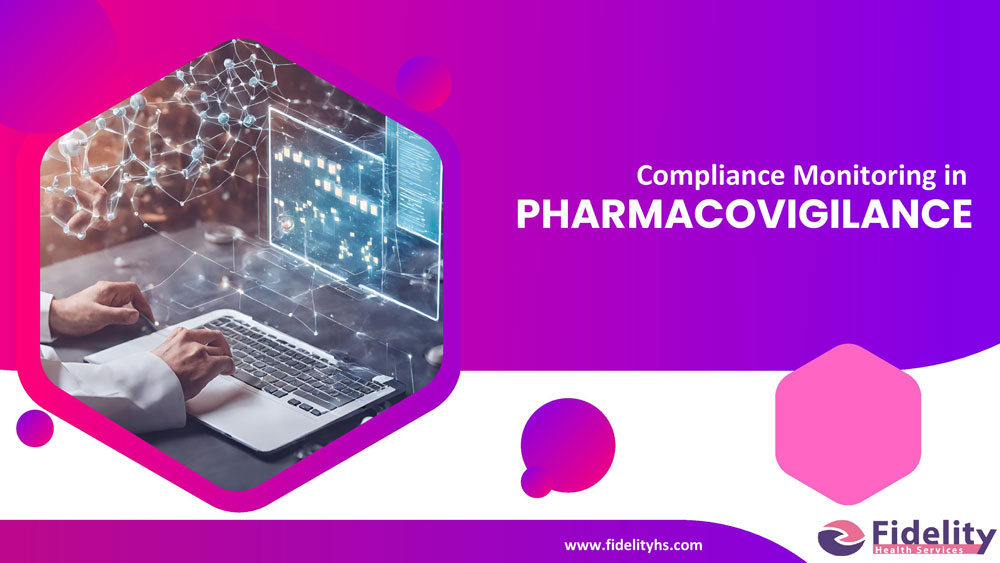
January 16, 2024
Compliance Monitoring in PHARMACOVIGILANCE
Importance and Objective:The continuous compliance monitoring in pharmacovigilance is paramount for maintaining patient safety, regulatory adherence, and the overall success and sustainability of pharmaceutical and bio- pharmaceutical companies in a highly regulated and competitive industry.
It is of utmost importance due to drug safety, risk mitigation, regulatory obligations fulfilment, business continuity and adaptation to industry dynamics.
Key steps:Here are some insights to follow for an effective compliance check in pharmacovigilance:
1. Understanding Compliance in Pharmacovigilance:Delve into the regulatory landscape and guidelines governing pharmacovigilance, emphasizing the importance of compliance in safeguarding public health.
2. Key Components of Compliance Monitoring:Break down the essential elements of compliance monitoring, including adverse event reporting, signal detection, risk management plans, and regulatory submissions.
3. Regulatory Agencies and Frameworks:Explore global regulatory agencies such as the FDA, EMA, MHRA and others, and their specific requirements for pharmacovigilance compliance. Highlight the evolving nature of regulations.
4. Technology and Automation:Discuss the role of technology and automated tools in enhancing compliance monitoring processes, from data collection to signal detection and reporting.
5. Challenges in Compliance Monitoring:Address common challenges faced by marketing authorization holders in maintaining compliance, such as resource constraints, evolving regulations, quality system documents’ adherence and the need for continuous adaptation.
6. Case Studies:Analyze real-world case studies of compliance successes and failures, drawing insights into effective strategies and lessons learned.
7. The Role of Data Quality:Emphasize the significance of high-quality data in compliance monitoring, exploring strategies for data collection, validation, and integration.
8. Training and Education:Highlight the importance of ongoing training programs for pharmacovigilance professionals to stay abreast of changing regulations and foster a culture of compliance within organizations.
9. Emerging Trends and Future Outlook:Examine current trends in compliance monitoring, such as the use of artificial intelligence and real-world evidence and speculate on future developments in pharmacovigilance compliance.
10. Best Practices:Summarize key best practices for establishing and maintaining effective compliance monitoring programs, ensuring the continuous improvement of pharmacovigilance processes.
Conclusion:In conclusion, the pivotal role of compliance monitoring in pharmacovigilance cannot be overstated. It serves as the cornerstone for ensuring patient safety, maintaining regulatory adherence, and fostering trust in the pharmaceutical industry. As the regulatory landscape continues to evolve, it is imperative for marketing authorization holders to prioritize ongoing efforts in compliance monitoring, not merely as a regulatory obligation but as a commitment to the well-being of patients and the broader public health. By embracing continuous compliance monitoring, the companies demonstrate their dedication to the highest standards of safety, efficacy, and quality in their products. This proactive approach not only mitigates risks but also positions companies as responsible contributors to the healthcare ecosystem. The call to action is clear: prioritize and invest in robust compliance monitoring programs, go beyond meeting minimum regulatory requirements, and strive to exceed expectations. This commitment will not only safeguard patients but also fortify the industry's reputation and contribute to a healthcare landscape built on transparency, accountability, and a shared commitment to advancing public health.
Empower your healthcare company with Fidelity Health Services’ comprehensive compliance monitoring services, ensuring seamless adherence to evolving regulatory requirements. Trust us to navigate the complex landscape, safeguarding your products and fostering a culture of compliance.
“Investing in rigorous compliance monitoring is not just a regulatory necessity; it's a proactive commitment and advancing a future where PV stands as an unwavering pillar of public health.”